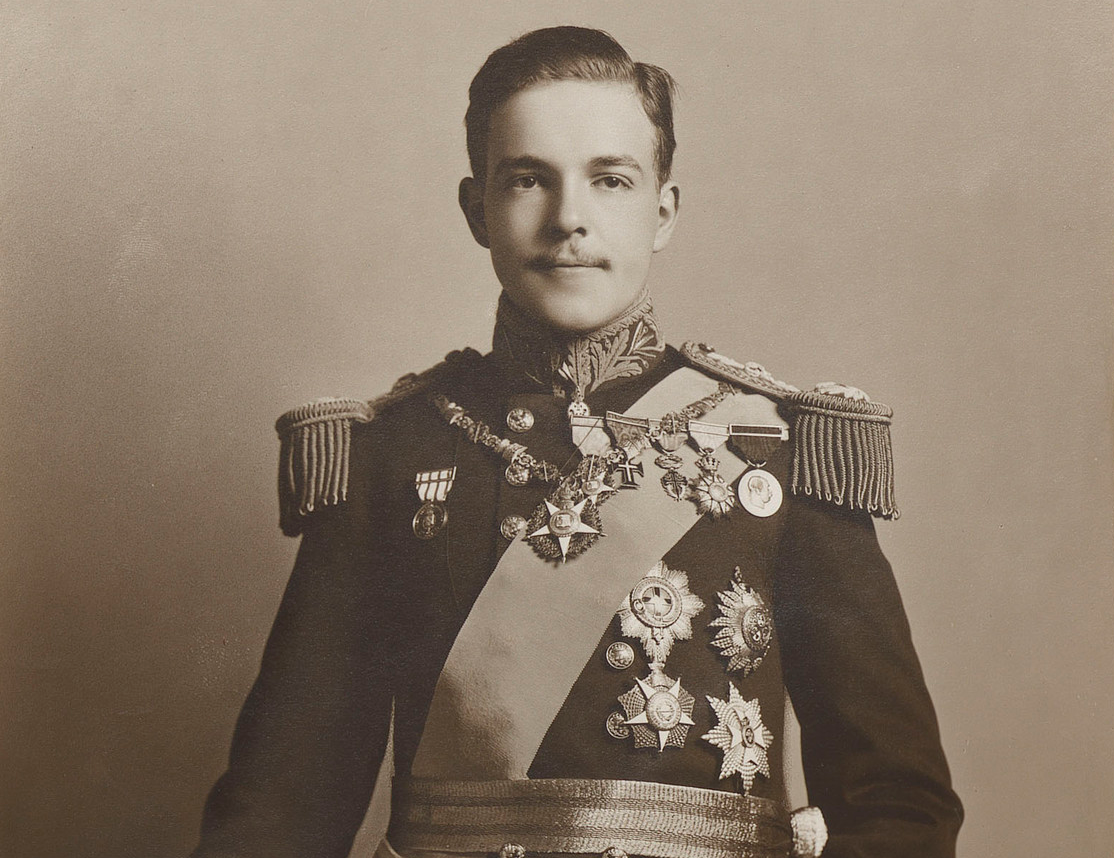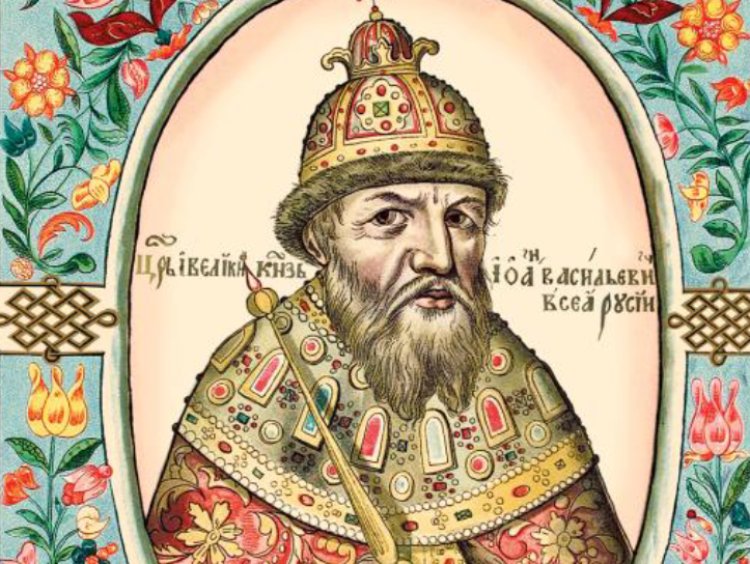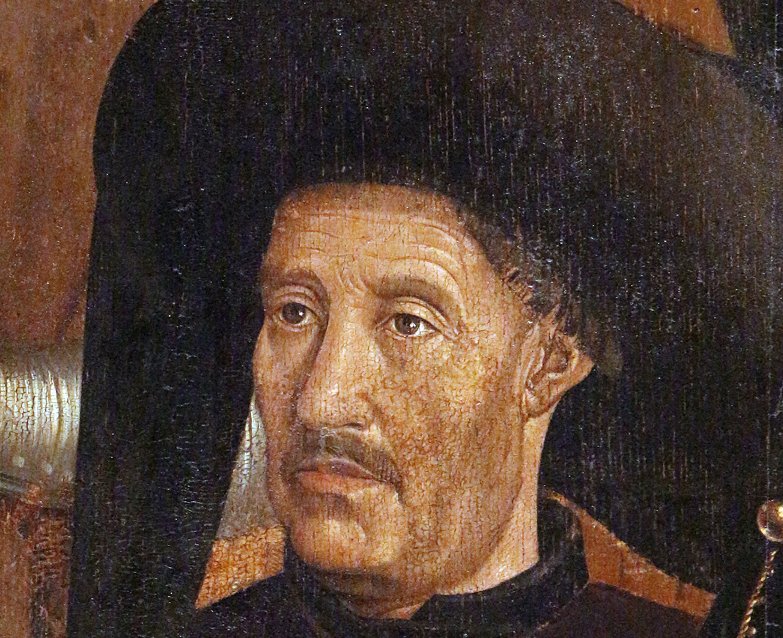Historical Figures Who Lived Up To Their Nicknames
Some historical figures are given particularly gruesome nicknames, either whilst alive or after their death, that shine a (rather dim) light on who they were as a person. Let's go over some historical figures who really lived up to their nicknames—whether they painted them as a hero or villain.

The Grandmother Of Europe
Did you know that of the world's 28 remaining monarchies, five are directly descended from Queen Victoria? The Queen of England from 1837 to 1901 had nine children and 42 grandchildren, who all married into royal families in Europe, making Queen Victoria the "Grandmother of Europe".
 Franz Xaver Winterhalter, Wikimedia Commons
Franz Xaver Winterhalter, Wikimedia Commons
Richard The Lionheart
Richard The Lionheart, otherwise known as Richard I of England, was King of England from 1189 to 1199. After winning favor with the previous monarch, Henry II, he earned his nickname "The Lionheart" for his courage and powerful leadership during a two-month siege of the Castillon-sur-Argen, a French castle. The first recorded use of the name was in 1191.
 Giogo, CC BY-SA 3.0, Wikimedia Commons
Giogo, CC BY-SA 3.0, Wikimedia Commons
Edward Longshanks
Edward I of England was also called the "Hammer of the Scots", due to his invasion and domination of Scotland. That begat William "Braveheart" Wallace, who showed Longshanks that he couldn't bully the Scots for eternity. But "Longshanks" actually got his name from being six feet tall. Simply meaning "Long legs", he was a tall man for the medieval period.
 Unknown author, Wikimedia Commons
Unknown author, Wikimedia Commons
Eirik Ale Lover
According to the Norwegian Landnámabók, or "Book Of Settlements", Vikings were commonly known by their nicknames, including one in particular, "Eirik Ale Lover". No prizes why he was known as an ale lover.
 Take 5 Productions, Vikings (2013–2020)
Take 5 Productions, Vikings (2013–2020)
Henry VIII
Before the time of King Henry VIII, England was a rich nation, with plentiful silver shillings—made with roughly 90% silver. By the time the King was through with the English currency, thanks to his love of luxury goods, he had debased the currency to the point where the coins were only made with 25% silver, the rest being comprised of copper. Thus, "Old Coppernose" became Henry's nickname.
 Joos van Cleve, Wikimedia Commons
Joos van Cleve, Wikimedia Commons
King George III
Known as "The Mad King" by historians, King George III suffered from an acute mental illness, characterized by bouts of mania, for much of the middle part of his reign. This largely resulted in the King making rash decisions, speaking for many hours without pause, and writing enormous sentences maniacally. Today, his illness is characterized as bipolar disorder.
 Allan Ramsay, Wikimedia Commons
Allan Ramsay, Wikimedia Commons
King John I
Imagine your dad taunting you as a "lackland" because he didn't leave you any lands to inherit. That was the fate of King John I of England. He was also called "softsword" by the rank and file of his army, because he'd lost Normandy to the French.
 British Library, Wikimedia Commons
British Library, Wikimedia Commons
Ethelred The Unready
English King Ethelred II (968-1016) was completely unprepared to stop a Danish assault on his Kingdom. Ethelred The Unready, translated as "Ethelred Unraed" on his tombstone, was a pun on his name, meaning "well advised".

Sign up to our newsletter.
History’s most fascinating stories and darkest secrets, delivered to your inbox daily. Making distraction rewarding since 2017.
Caligula
The Roman Emperor Caligula ruled Rome from 12-41 AD. His actual name was Gaius Caesar Augustus Germanicus, but he was called "Caligula" meaning "Little Boots", maybe because he had small feet. Caligula's fierce temperament likely meant that nobody called him that name to his face.
 Sergey Sosnovskiy, CC BY-SA 2.0, Wikimedia Commons
Sergey Sosnovskiy, CC BY-SA 2.0, Wikimedia Commons
William The Conqueror
Otherwise known as William I of England, he was the King of England from 1066 till his death in 1087. After defeating Harold Godwinson at the Battle of Hastings in 1066, William became King of England and was the first Norman (French) King of England.
Manuel The Unfortunate
I mean, I wouldn't call losing your kingdom, causing the abolition of the Monarchy in Portugal, living in exile in England, and dying from suffocation due to a swollen trachea "unfortunate", but that's what Manuel II of Portugal is known as. Manuel "The Unfortunate" is also known as "Manuel The Bibliographer" for his love of books. Could have been a librarian in another life. Perhaps he would have done a better job.
 Unknown author, Wikimedia Commons
Unknown author, Wikimedia Commons
Ismail The Bloodthirsty
The second ruler of the Alawi dynasty, Ismail ibn Sharif of Morocco was known as "Ismail The Bloodthirsty" by Europeans for his exceptional cruelty and brutality on the battlefield. Although, these tactics were effective and Morocco became a mostly peaceful nation under him. He might also have been known as "Ismail The Progenitor", having fathered more than 800 biological children with 500 women during his lifetime.
 Germain Moüette, Wikimedia Commons
Germain Moüette, Wikimedia Commons
Charles The Child
King Charles of Aquitaine became King of Aquitaine (modern-day France) in 855, when his father, John The Bald (guess why he was known as such), bestowed the role upon him. Despite being only six years old when he became King, and having no real power, Charles The Child did rule Aquitaine for 10 years until his death in 866, at just 15 years old.
 Comte Vivien, Wikimedia Commons
Comte Vivien, Wikimedia Commons
Ivaylo The Cabbage
No, Ivaylo the Cabbage didn't have a knack for sauerkraut creations, but he did lead a peasant uprising in Bulgaria in 1277, forcing the Bulgarian nobility to accept him as emperor. It was his rags-to-riches story that led him to be called "Ivaylo The Cabbage". An inspiration for cabbages everywhere.
 Красимир Косев, CC BY 3.0, Wikimedia Commons
Красимир Косев, CC BY 3.0, Wikimedia Commons
Maria The Educator
Maria II was Queen of Portugal on two occasions: between May 1826 to July 1828, and May 1834 to November 1853. The much-beloved queen was given the nickname "Maria The Educator", because she bolstered higher levels of education across the country throughout her reign and introduced public health legislation that mitigated the spread of cholera.
 Unknown author, Wikimedia Commons
Unknown author, Wikimedia Commons
Wenceslaus The Drunkard
Popularized as "Good King Wenceslas", Wenceslaus of Bohemia had another name—on account of being "a devil for the drink," the "Good King" was named "Wenceslaus the Drunkard."
 Peter Parler, Wikimedia Commons
Peter Parler, Wikimedia Commons
Louis XIV, The Sun King
Louis XIV was apparently the model for what a good king should be, when he ruled France was 1643 at the age of four, until 1715 at the age of 76. Known as "The Sun King" due to his reign being associated with that of the Greek God Apollo, Louis XIV could do no wrong. He was such a role model that for 86 years, every king between 1715 and 1804 was also named Louis.
 Hyacinthe Rigaud, Wikimedia Commons
Hyacinthe Rigaud, Wikimedia Commons
Alfonso The Founder
Alfonso I of Portugal was the first King of Portugal and became known as "Alfonso The Founder" as a result. He founded the County of Portugal and led conquering wars that doubled its territorial size between 1112 AD and 1139 AD.
 Unknown author, Wikimedia Commons
Unknown author, Wikimedia Commons
Elizabeth I Of England
Ushering in the first Elizabethan Age and overseeing huge advances in British society, politics, culture, wealth, and military conquest meant that Elizabeth I left quite an impression. Nicknamed "Elizabeth The Glorious", or simply "Gloriana" by her subjects and historians, she remains a legendary figure in British monarchical history.
 After Levina Teerlinc, Wikimedia Commons
After Levina Teerlinc, Wikimedia Commons
Vlad The Impaler
King Vlad III of Wallachia just doesn't quite have the same ring to it as "Vlad The Impaler", does it? The legendary figure in Romanian history was king three between 1448 and 1477. Known as "Vlad The Impaler" because of his favorite method of execution—impalement on huge wooden spines—Vlad has inspired vampire myths and the classic Bram Stoker's Dracula.
Nicholas The Martyr
Nicholas II of Russia was the last Emperor of Russia and is recognized as a martyred saint by the Russian Orthodox Church. He ruled from 1894 until the Russian Revolution deposed him in 1917, thereafter he and his entire family were executed.
 Unknown author, Wikimedia Commons
Unknown author, Wikimedia Commons
Genghis Khan
Genghis Khan was Khagan of the Mongols and the founder of the Mongol Empire, which spread through his military conquests throughout China and Southeast Asia. Known for his ruthless methods of fighting, the name "Genghis" is more of a nickname than his real name—which was the slightly less-imposing "Temüjin".
 Sayf al-Vâhidî, Wikimedia Commons
Sayf al-Vâhidî, Wikimedia Commons
Ivan I Of Moscow
Ivan I of Moscow was known as "Money Bags Ivan". But not for reasons you might think. Ruling Moscow from 1325 to 1340, the young king had a soft spot for the poor. He moved the Seat of the Russian Orthodox Church to Moscow from Vladimir, allowing for the church's money to flow into Moscow and make it the central part of Russian regional power. He earned the nickname of "Money Bags" for always giving some silver coins to the poor when he was out and about. The Robin Hood of 14th-century Russia, you might say.
 Wayback Machine, Wikimedia Commons
Wayback Machine, Wikimedia Commons
Queen Isabella II Of Spain
The only queen regnant in the history of unified Spain, Queen Isabella II was the Spanish Queen from 1833 until 1868 and oversaw Spain's transition from an absolute monarchy to a constitutional monarchy with the Spanish Constitution of 1837. She was queen regnant while she was a child until 1843, when she began her personal rule. Her nickname is the "Queen of Sad Mischance," as her personal rule was marked by rumors, palace intrigue, and military rebellions (such as the Glorious Rebellion of 1868).
 Jean Laurent, Wikimedia Commons
Jean Laurent, Wikimedia Commons
Ivan VI Of Russia
From a good Ivan of Russia to a terrible Ivan of Russia—Ivan The Terrible was the first Tsar of Russia, from 1547 until 1584. How does one become "Ivan The Terrible"? A nearly-endless list of transgressions, including nearly bankrupting the country in the War of Livonia, consolidating power by murdering civilians and regional nobility—oh, yes, and murdering his own son, then causing his daughter-in-law to miscarry by kicking her in the stomach.
 Unknown author, Wikimedia Commons
Unknown author, Wikimedia Commons
Mary I Of England
We could hardly craft a list of people who lived up to their nicknames and not include "Bloody Mary", could we? Mary I of England was the daughter of Henry VIII and Catherine of Aragon. Her attempts to reverse the English Reformation and consolidate power in the hands of the Catholic Church would prove disastrous and deadly. "Bloody Mary" persecuted Protestants and burned upwards of 280 people at the stake.
 Antonis Mor, Wikimedia Commons
Antonis Mor, Wikimedia Commons
Emperor Puyi Of China
Emperor Puyi was the "Last Emperor of China", as he ascended to the throne at the age of just two years old, following the death of the previous emperor who left no heirs. The Last Emperor of China ruled for just four years, before being forced to abdicate after the Xinhai Revolution ended two millennia of imperial rule in China, establishing the Republic of China in 1912.
 Unknown author, Wikimedia Commons
Unknown author, Wikimedia Commons
William Wallace
Semi-permanent pain-in-the-backside of Edward Longshanks, William Wallace was known as "Braveheart" by his fellow beloved Scotsmen. His brave fight against the English during the First War of Scottish Independence (1296-1328) is documented throughout history, and despite his death at the hands of Edward Longshanks, Braveheart remains a pivotal figure in Scottish and British history.
 Kjetil Bjørnsrud, CC BY-SA 3.0, Wikimedia Commons
Kjetil Bjørnsrud, CC BY-SA 3.0, Wikimedia Commons
Attila The Hun
Attila The Hun was the leader of the Hunnic Empire in Central and Eastern Europe from 434 AD to 453 AD. Despite his reign lasting less than 20 years, he was one of Rome's most fearsome foes, mercilessly sacking Roman cities and towns, leaving no persons alive, including attempting to take the famous Roman city of Constantinople. This earned him the nickname "The Scourge Of God".
 Chronicon Pictum, Wikimedia Commons
Chronicon Pictum, Wikimedia Commons
Josef Mengele
SS officer Josef Mengele was nicknamed "The Angel of Death" by guards and prisoners at Auschwitz concentration camp, after being posted there as the camp physician in 1943. He conducted atrocious human medical experiments and will go down as one of history's worst-ever people.
 Bernhard Walther, Wikimedia Commons
Bernhard Walther, Wikimedia Commons
Reinhardt Heydreich
SS officer Reinhardt Heydreich had many nicknames: "The Hangman", "the Butcher of Prague", and "the Man With The Iron Heart". His latter nicknamed was given to him by Hitler and earned by the callousness with which he went about murdering Jews, particularly in organizing the pogrom known as "Kristallnacht" in 1938 and instigating "The Final Solution".
 Bundesarchiv, Wikimedia Commons
Bundesarchiv, Wikimedia Commons
Abdullah II Of Jordan
Known as the "Warrior King" by the Jordanians, King Abdullah II of Jordan had a sparkling military career before ascending to the throne of Jordan in 1999. First, he joined the British Army on secondment from the Jordanian Armed Forces, stationed in Britain and West Germany. He then commanded tanks in the Jordanian military and even holds an honorary rank of Colonel-in-Chief of the Light Dragoons in the British Army.
 European Parliament, CC BY 2.0 Wikimedia Commons
European Parliament, CC BY 2.0 Wikimedia Commons
Henry The Navigator
Perhaps the most unearned of our historical nicknames is Prince Henry of Portugal. He was the son of King John I of Portugal and better-known as "Henry The Navigator". He played a pivotal role in establishing the Portuguese Empire and beginning the Age of Discovery, a part of histhory where Europeans explored and conquered new realms, including the New World. Fun fact: He never sailed a ship in his life.













